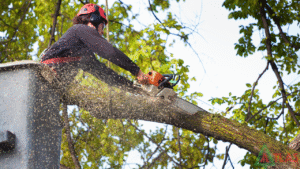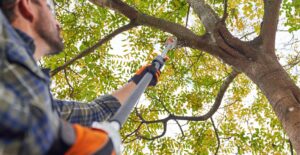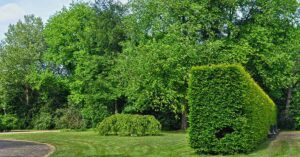Permit for Tree Removal in the USA: A Comprehensive Guide
Tree removal in the United States is often regulated by local councils and cities to protect the environment, preserve aesthetics, and maintain ecological balance. Obtaining the right permit for tree removal can involve navigating through various regulations, requirements, and fees. This guide will provide detailed insights into the process of acquiring tree removal permits across different councils and cities in the USA, covering costs, application formats, and specific requirements for various regions.
1. Understanding Council and City Permissions for Tree Removal
Before removing a tree on your property, it’s crucial to determine whether you need permission from your local council or city. Permissions are usually required to ensure that tree removal is necessary and to minimize environmental impacts.
Council Permissions:
- When Required: Council permissions are typically required for trees of a certain size, species, or those located in designated conservation areas.
- Exemptions: Small trees, dead trees, or those posing an immediate danger may be exempt, but verification is often needed.
- Application Process: Applications usually involve submitting details about the tree’s location, species, size, and reason for removal. A site inspection may also be required.
City Permissions:
- City Regulations: City regulations vary significantly. Some cities require permits for almost all tree removals, while others only regulate specific species or trees over a certain height or trunk diameter.
- Permit Fees: Fees for city permits can range from minimal amounts for basic applications to higher fees if additional inspections or reports are required.
Tips for Navigating Permissions:
- Always check with your local council or city government to understand specific requirements.
- Obtain any necessary arborist reports or professional assessments as part of your application.
2. Cost for Tree Removal Permits
The cost of obtaining a tree removal permit can vary widely depending on the location, the type of tree, and the specifics of the removal.
Factors Influencing Permit Costs:
- Tree Size and Species: Larger, protected, or heritage trees often have higher permit costs due to the additional scrutiny required.
- Inspection Fees: Some councils charge additional fees for on-site inspections or if an arborist report is required.
- Processing Fees: Basic administrative costs for processing the application are usually included in the overall permit fee.
Typical Cost Ranges:
- Small Trees: Permits can range from $20 to $50.
- Medium Trees: Fees might range from $50 to $150.
- Large or Protected Trees: Costs can be $150 to several hundred dollars, especially if additional documentation is required.
Table: Average Tree Removal Permit Costs by Size
| Tree Size | Average Permit Cost | Additional Fees |
|---|---|---|
| Small (Under 10 ft) | $20 – $50 | Minimal, usually no extra fees |
| Medium (10 – 30 ft) | $50 – $150 | Possible inspection fees |
| Large (Over 30 ft) | $150 – $500+ | Arborist reports, extra inspections possible |
3. License Requirements for Tree Removal in the USA
Aside from obtaining a permit, hiring a licensed tree removal service is often a legal requirement. Licensing ensures that the company or individual has the necessary qualifications, insurance, and expertise to safely remove trees.
Why Licensing Matters:
- Safety Compliance: Licensed professionals adhere to safety standards, reducing the risk of damage to property or injury.
- Insurance Coverage: Licensed services are usually insured, providing protection against any accidents or damage during the tree removal process.
- Quality Assurance: Licensing ensures that the service provider meets the industry standards for tree removal, pruning, and stump grinding.
Steps to Verify Licensing:
- Check with your state’s licensing board or local council to verify if the tree removal service has the required licenses.
- Request proof of insurance and licensing before hiring a tree removal service.
Bullet Points for Hiring Licensed Services:
- Always verify the license number and validity.
- Check for reviews or references to ensure quality of service.
- Confirm that the service provider has workers’ compensation and liability insurance.
4. Bayside Council Tree Removal Permit
Bayside Council, like many other councils, has specific regulations governing tree removal. Obtaining a permit from Bayside Council involves a clear understanding of their policies, application procedures, and necessary documentation.
Requirements for a Bayside Council Permit:
- Protected Trees: Bayside Council protects certain species and large trees, requiring permits for removal.
- Application Process: Applicants must provide details of the tree’s species, size, location, and the reason for removal.
- Supporting Documents: An arborist report may be required, especially for large or healthy trees.
How to Apply:
- Online Application: Bayside Council typically offers online submission forms for convenience.
- Inspection: An on-site inspection by a council officer may be scheduled to assess the tree and validate the need for removal.
- Approval: Once approved, permits are usually issued with conditions that must be adhered to during removal.
Application Tips:
- Provide clear photographs and accurate descriptions to support your application.
- Ensure all required fields and supporting documents are complete to avoid delays.
5. Maroondah Council Tree Removal Application
Maroondah Council has stringent tree protection laws aimed at preserving urban greenery. Understanding their specific application process is key to successful tree removal.
Key Points for Maroondah Council Permit:
- Permit Necessity: Permits are required for trees on private property if they meet certain size or species criteria.
- Exemptions: Dead trees or those posing an immediate safety risk may be exempt but still require council notification.
- Assessment: Applications are assessed based on tree health, significance, and potential impact on the environment.
Steps to Apply:
- Download the Application Form: Available on the Maroondah Council website.
- Complete the Form: Include details such as the tree’s dimensions, location, and removal justification.
- Submit with Fees: A fee is typically required upon submission, which covers the application processing.
Common Pitfalls:
- Incomplete applications or missing documents can delay approval.
- Misidentifying tree species or providing incorrect measurements can lead to permit rejection.
6. Tree Removal Permit in Victoria
Victoria has comprehensive laws regarding tree removal, with various councils enforcing regulations to protect urban forestry. Securing a tree removal permit in Victoria involves understanding the regional laws and council-specific rules.
Overview of Victorian Tree Removal Laws:
- Protected Trees: Certain native species and trees of significant size are protected under Victorian law.
- Permit Application: A permit is usually required for removal, lopping, or pruning beyond a set threshold.
- Role of Arborists: An arborist report may be required to assess the tree’s health and justify removal.
Application Process:
- Check Local Council Rules: Each council may have specific requirements. Check online or contact your local council.
- Prepare Documentation: Gather all necessary details, including photos, site plans, and any environmental assessments.
- Submit and Await Inspection: Submit your application through the council’s website and wait for any required inspections or approvals.
Table: Common Permit Requirements in Victoria
| Requirement | Description | Examples |
|---|---|---|
| Size Restrictions | Permits required for trees over specific heights or diameters | Over 5m tall or trunk over 30cm diameter |
| Species Protection | Native or heritage trees often protected | Eucalyptus, certain acacias |
| Location Considerations | Trees in conservation areas or near waterways need permits | Within 30m of a waterway |
7. Northern Beaches Council Tree Removal Application
Northern Beaches Council requires permits for most tree removals, especially for trees of ecological or aesthetic value. Navigating their application process involves understanding specific criteria and providing thorough documentation.
Application Requirements:
- Species and Size: Permits are necessary for trees that exceed set height or trunk diameter limits, and for species protected by local ordinances.
- Application Details: The form requires information on the tree’s condition, location, and the reason for removal.
- Supporting Evidence: Photos, arborist reports, and site plans may be required, particularly for large or healthy trees.
Application Steps:
- Online Submission: Northern Beaches Council offers an online portal for easy submission of applications.
- Inspection: A council officer may visit the site to evaluate the tree and verify the need for removal.
- Decision: Approval or rejection is communicated after assessment, with specific conditions outlined for approved permits.
Tips for a Successful Application:
- Be detailed in your descriptions and provide all requested documentation.
- Highlight any safety concerns or potential damage to property that justifies removal.
8. Knox Council Tree Removal Permit
Knox Council enforces tree protection to maintain the region’s green cover and biodiversity. Applying for a tree removal permit involves meeting specific criteria and following the council’s detailed application procedures.
Knox Council Permit Requirements:
- Protected Species and Sizes: Permits are required for trees of certain species or those that exceed designated height or diameter thresholds.
- Application Process: Includes submitting an application form along with any required supporting documentation, such as an arborist report.
- Inspection and Approval: Knox Council often conducts site visits to assess the need for tree removal and ensures that all guidelines are followed.
Application Format:
- Access the Form: Available on the Knox Council website.
- Complete with Details: Include tree size, species, and reason for removal, alongside any professional assessments.
- Submit and Pay Fees: Application fees vary depending on the type and scope of the removal request.
Common Requirements:
- Arborist assessments are often required for large or healthy trees.
- Photographs and clear descriptions improve the likelihood of permit approval.
9. Tree Removal Laws in Victoria
Victoria’s tree removal laws are designed to protect urban trees and green spaces. These laws can vary from council to council, making it essential to understand local regulations before proceeding with tree removal.
Key Aspects of Victoria’s Tree Removal Laws:
- Protected Trees: Include specific native species and trees deemed significant due to their size, age, or ecological value.
- Permit Necessity: Required for most tree removals, with exemptions usually limited to dead trees or those posing immediate hazards.
- Environmental Impact Considerations: Removal applications often require an environmental impact assessment, particularly for trees in sensitive areas.
Legal Obligations:
- Fines and penalties can be imposed for unauthorized tree removal.
- Compliance with council-specific regulations is mandatory to avoid legal repercussions.
Steps to Comply:
- Check your local council’s tree protection regulations before any tree work.
- Obtain necessary permits and ensure that all conditions are met during removal.
10. Application Format for Tree Removal Permits
The application format for tree removal permits typically involves several key components. Understanding the required information and format can help streamline the process and improve the chances of approval.
Common Application Components:
- Applicant Information: Name, address, contact details, and property ownership verification.
- Tree Details: Species, size, location, and health condition of the tree.
- Reason for Removal: Justification for removal, including safety concerns, property damage, or landscaping needs.
- Supporting Documents: Photos, site plans, arborist reports, and environmental assessments as required.
Step-by-Step Application Guide:
- Download or Access Online: Most councils provide application forms on their websites.
- Fill Out All Required Fields: Ensure accuracy in tree descriptions and measurements.
- Attach Supporting Documents: Include all necessary reports and evidence to support your case.
- Submit and Pay Fees: Submit your application through the appropriate channels, either online or in person, and pay the required fees.
Tips for a Successful Application:
- Double-check all information for accuracy and completeness.
- Ensure that all required attachments are included to avoid delays.
- Follow up with the council if you do not receive a response within the expected time frame.
Conclusion
Obtaining a tree removal permit in the USA involves navigating various local regulations, understanding council and city-specific requirements, and preparing detailed applications with all necessary documentation. Whether dealing with Bayside Council, Maroondah Council, or any other local authority, knowing the rules and processes can help you secure the necessary permissions efficiently. Always verify local laws, hire licensed professionals, and provide thorough justification for tree removal to ensure compliance and protect the environment.
Tree Removal Requirements by State
In the United States, tree removal requirements vary by state and local jurisdiction. Each state has its own laws and regulations to balance environmental conservation with property rights. Typically, permits are required when removing trees that are deemed “protected” due to size, species, or location.
Requirements Examples by State:
- California: Requires permits for the removal of certain tree species, especially in cities like Los Angeles or San Francisco, where heritage trees are protected. Homeowners must submit a formal application and often need approval from an arborist.
- Florida: In Florida, recent changes allow homeowners to remove trees without permits if they pose a danger to the property, provided they have an official assessment from a certified arborist or landscape professional.
- Texas: Tree removal regulations are more lenient, but cities like Austin have ordinances that protect larger trees, and property owners need a permit to remove trees over a specific diameter.
The variability by state underscores the importance of checking local regulations before proceeding with tree removal. Failure to comply can result in fines or legal issues.
Tree Removal Regulations by State
State regulations for tree removal often reflect a balance between urban development and environmental conservation. In many states, these regulations consider the type of tree, its size, and its location.
Examples of Tree Removal Regulations:
- New York: Has stringent regulations for removing trees on both private and public property, especially for certain species that provide ecological value. In New York City, trees in public spaces require special permits for removal, and replacements may be mandated.
- Washington: Focuses heavily on protecting native trees and those that contribute to environmental health. Local governments may require replanting when certain protected trees are removed.
Understanding these regulations is essential for both homeowners and developers to avoid legal consequences and contribute to sustainable practices.
Trees Removed Without Permit
Removing trees without a permit is illegal in many states and municipalities, especially when protected trees or public property are involved. The consequences for removing a tree without a permit can include hefty fines, mandatory replanting, or restoration costs.
Example Consequences:
- In California, fines for removing a tree without a permit can range from a few hundred to thousands of dollars, depending on the tree’s significance and the extent of the violation.
- In Florida, the law allows trees to be removed without a permit in cases where they pose a danger, but it requires proof from a licensed professional. Without this proof, homeowners can face penalties.
Tree Removal License Requirements
In most states, individuals or companies that provide tree removal services must be licensed and insured. These requirements ensure that the person or company is qualified to handle the job safely and that homeowners are protected from potential liability.
License Requirements Examples:
- California and New York require professional tree removal companies to hold specific licenses, and they must adhere to state guidelines for environmental protection.
- Texas has less stringent requirements, but local ordinances may require contractors to register with the city and provide proof of insurance.
Licensing requirements help maintain safety and environmental standards, protecting both property owners and communities.
Tree Removal on Private Property
Most states allow homeowners to remove trees on their private property, but this right is often subject to local ordinances and environmental considerations. Some states have restrictions on removing heritage or large trees.
Examples:
- In Georgia, homeowners have more freedom to remove trees on private property, but trees within specific urban areas may require permits.
- In California, even trees on private property may be subject to city or county regulations, especially if they contribute to the area’s ecological balance or are considered “protected species.”
Cutting Tree Without Permit
Cutting down a tree without the necessary permits is illegal in many jurisdictions, particularly if the tree is protected or located on public land. The consequences of unauthorized tree removal can be severe.
Examples of Penalties:
- New York City imposes fines of up to $10,000 for illegally cutting down protected trees.
- Washington State requires both permits and replacements for certain trees removed without authorization.
Tree Removal on City Property
Removing trees from city property is highly regulated. Cities often consider trees on public property as valuable environmental assets, and unauthorized removal can lead to severe penalties.
Examples:
- In New York City, only the city or authorized personnel can remove trees from public spaces, and heavy fines are imposed on violators.
- In Los Angeles, certain street trees are protected, and removal without the city’s permission can result in significant penalties.
Permit to Cut Down Tree
Most municipalities require a permit to cut down a tree, especially if the tree is protected by local ordinances. The application process typically includes a site inspection and sometimes a fee.
Examples:
- In San Francisco, a permit is required to remove any tree on public or private property that exceeds a specific height or trunk diameter.
- In Austin, Texas, a permit is needed to remove a tree with a diameter of 19 inches or more.
Short Answers:
- Tree removal requirements by state: Vary widely based on species, size, and location.
- Tree removal regulations by state: Governed by local ordinances and conservation efforts.
- Trees removed without a permit: Can result in fines or penalties in most areas.
- Tree removal license requirements: Required in most states for professionals.
- Tree removal on private property: Often regulated by local laws, particularly for large or heritage trees.
- Cutting tree without a permit: Typically illegal and subject to fines.
- Tree removal on city property: Requires city approval and can carry heavy fines if done without permission.
- Permit to cut down a tree: Required in many places for large or protected trees.
FAQs About Tree Removal Permits in the USA
- Do I always need a permit to remove a tree on my property?
Not always. Permit requirements depend on local council or city regulations, tree species, size, and location. Some trees, especially those that are small, dead, or pose immediate danger, may be exempt, but it’s best to check with your local authority before proceeding. - How long does it take to get a tree removal permit?
The processing time for a tree removal permit varies by council or city but typically ranges from a few days to several weeks. Factors like the need for inspections, arborist reports, and the complexity of the application can influence the timeline. - What documents are needed for a tree removal permit application?
Commonly required documents include the completed application form, photos of the tree, a site plan, an arborist report, and proof of property ownership. Additional documents may be requested depending on local regulations and the specifics of the tree removal. - What happens if I remove a tree without a permit?
Removing a tree without a required permit can result in fines, legal penalties, and a mandate to replace the tree. Penalties vary by location but can be substantial, especially for protected or significant trees. Always verify permit requirements before removal. - Are there exceptions to needing a tree removal permit?
Yes, exceptions typically include dead trees, trees that pose immediate safety risks, and small trees below certain size thresholds. Some areas may also exempt specific non-native species. Check local regulations for detailed exemptions and confirm with your local council. - Can I appeal if my tree removal permit is denied?
Yes, most councils and cities offer an appeal process if your permit is denied. This usually involves submitting additional information, such as a more detailed arborist report, or addressing the reasons for denial as outlined by the council or city authority. - How much does an arborist report cost for a tree removal permit?
The cost of an arborist report can vary but typically ranges from $150 to $500, depending on the complexity of the assessment and the number of trees involved. This report is often required for large, healthy, or protected trees to justify removal. - What is a heritage or protected tree?
Heritage or protected trees are those that have historical, ecological, or aesthetic significance. They are often larger, older trees or specific species that contribute significantly to the local environment. Removing these trees usually requires a special permit with strict conditions. - Do tree removal permits expire?
Yes, tree removal permits usually have an expiration date, which can range from a few months to a year, depending on the issuing authority. If the tree is not removed within this timeframe, you may need to reapply for a new permit. - Can I remove a tree on my neighbor’s property if it’s affecting mine?
No, you cannot remove a tree on a neighbor’s property without their permission and the necessary permits. You can discuss the issue with your neighbor and suggest they apply for a permit if the tree poses a problem to your property. - Is a permit required for pruning large branches?
It depends on local regulations. Some councils require permits for significant pruning, especially if it involves more than a certain percentage of the tree’s canopy or if the tree is protected. Minor pruning typically does not require a permit, but it’s best to check local rules. - Do all cities in Victoria have the same tree removal laws?
No, tree removal laws vary between councils within Victoria. Each council has its own set of regulations, species protections, and permit requirements. It is important to consult your specific local council’s rules to ensure compliance with their unique guidelines. - What should I do if my application is delayed?
If your tree removal permit application is delayed, contact the council or city office for an update. Ensure all required documents were submitted correctly. You may also ask if additional information is needed to expedite the process or if any inspections are pending. - Can a tree removal service handle the permit process?
Yes, many professional tree removal services offer to handle the permit application process on your behalf, including preparing documentation and coordinating with local authorities. This can streamline the process and ensure compliance with local regulations. - What information should be included in the tree removal application form?
The application form typically requires details about the property owner, tree species, size, location on the property, and the reason for removal. Additional information like site plans, photographs, and arborist assessments may also be needed to support the application.
Here are some official U.S. government and local council websites where you can find information on tree removal permits, applications, and regulations:
- USA.gov – Local Government Resources
USA.gov Local Resources
This site provides links to local government offices across the United States, where you can find specific tree removal regulations and permit information for your area. - Arbor Day Foundation – State Tree Laws
Arbor Day Foundation – State Tree Laws
While not a government site, the Arbor Day Foundation provides a comprehensive overview of tree laws by state, which can help guide you to the appropriate state or local government resources. - New York City Parks – Tree Work Permits
NYC Parks Tree Work Permits
For residents of New York City, this site provides detailed information on obtaining permits for tree removal, pruning, or planting in public areas. - City of Los Angeles – Urban Forestry Division
LA Urban Forestry Division
This website includes guidelines and applications for tree removal, planting, and other tree-related activities in Los Angeles. - San Francisco Public Works – Tree Removal Permit
SF Public Works Tree Removal Permit
For San Francisco, this site outlines the requirements and process for applying for tree removal permits on private property. - Portland Parks & Recreation – Tree Permits
Portland Tree Permits
This page provides information on tree removal permits, including requirements for pruning and planting within Portland, Oregon. - Austin Development Services Department – Tree Ordinance
Austin Tree Ordinance
This link leads to Austin’s development services where you can access their tree ordinance, permit applications, and guidelines for tree protection and removal. - Seattle Department of Construction and Inspections – Tree Regulations
Seattle Tree Regulations
This site offers detailed information on tree protection codes and permits required for tree removal in Seattle. - City of Chicago – Tree Trimming and Removal
Chicago Tree Trimming and Removal
This webpage covers the City of Chicago’s requirements for tree trimming and removal on public and private property. - City of Phoenix – Tree Removal Permit
Phoenix Tree Removal Permit
Phoenix provides guidelines for tree removal permits, particularly for heritage trees and those within right-of-ways.
These links provide direct access to relevant local or city government resources for obtaining tree removal permits and understanding applicable regulations. For areas not listed, checking your local city or county’s official website under their Parks, Forestry, or Public Works departments can provide specific guidance.




